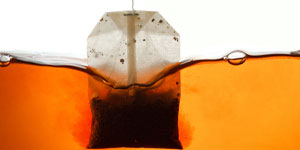Brain Tumor Survivor, Beauty Lifestyle Expert with a Healthy Twist
Originally Posted: 11/30/2012 2:25 pm (Huff Post Style)
Many of you already know teas (specifically black and green teas) are high in antioxidants; in fact, some studies indicate that green and black teas may have 10 times the amount of antioxidants found in fruits and vegetables. But did you realize that tea can be beneficial to your hair growth and used as a natural highlighter/colorant?

Photo Credit: istockphoto.com
Certain types of tea are more beneficial to your specific hair type:
• If you have light-colored hair, use chamomile. Chamomile will bring out your natural blonde highlights. Just wash and condition hair, then rinse or spritz your hair with some strong, freshly-brewed chamomile tea. Let your locks spend a few minutes in the sun (protect your skin from UV rays, of course), and let the highlights begin.
• Black tea can darken hair as well as give it a healthy-looking sheen. Steep a pot of very strong black tea, let cool, then completely saturate your hair.
• If you have medium-brown, strawberry-blonde or auburn-colored hair, calendula/marigolds have been known to bring out red highlights as well as enhance the auburn color of your hair. Beware; leaving this concoction on your hair too long can leave brassy tinges.
• Rosemary tea will bring out the warmth and richness of dark hair.
Remember to rinse the tea out after 30 minutes to an hour and be patient; this isn't a quick fix.
Additionally, drinking two cups of rosemary tea a day has been known to prevent hair loss due to poor circulation, and it also helps to re-stimulate growth, particularly after chemotherapy. [1] Further, sage tea applied externally as well as consumed is also known to stimulate hair growth.
Natural remedies are the best remedies, so take some time and give your hair a nice, natural herbal rinse today. And why not sip some tea on the side?
For more natural beauty ideas visit us on indielee.com or check us out on Facebook & Pinterest.
References:
[1] Shealy, C. Norman. The illustrated Encyclopedia of Healing Remedies. Element Books Ltd. 1998. p. 307.
Comments
Post a Comment